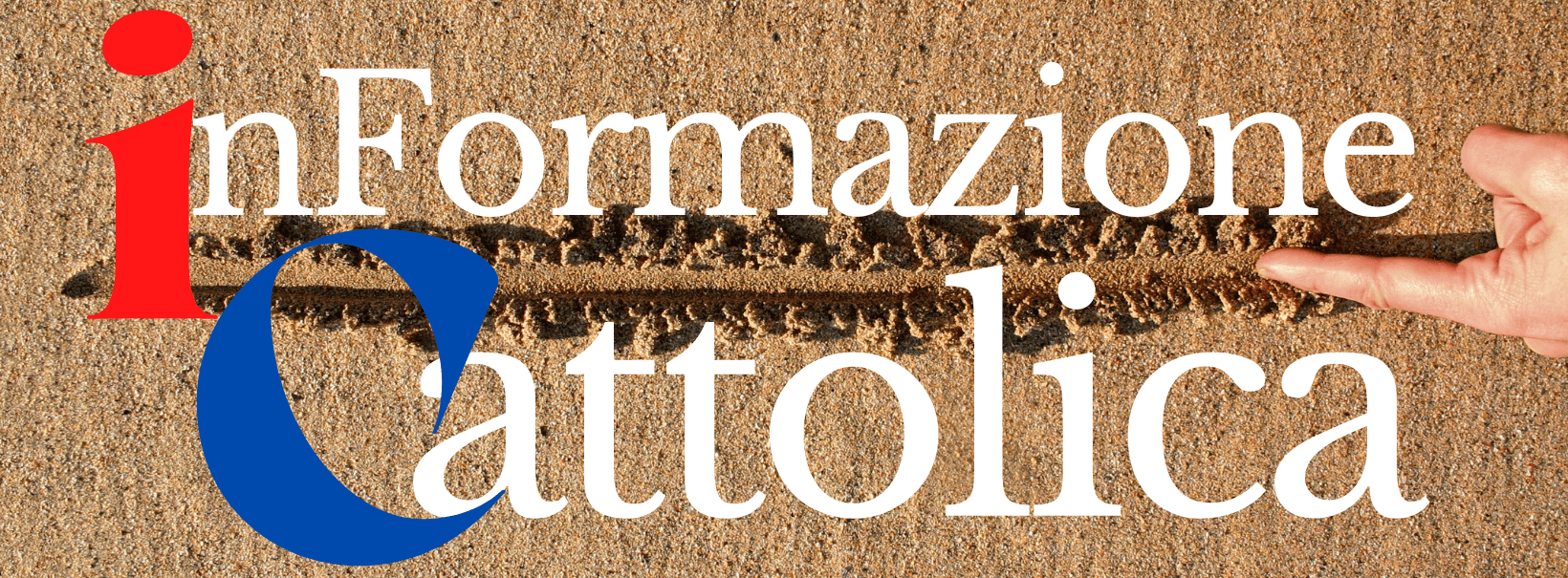 Osservatorio Internazionale Cardinale van Thuan
Osservatorio Internazionale Cardinale van Thuan
Newsletter n. 487 – 22 marzo 2014
Conferenza all’Associazione Verità e Vita
Bologna, Convento di San Domenico
15 marzo 2014
Stefano Fontana
(in english too)
Durante il pontificato di Giovanni Paolo II era emersa la linea del rilancio della Dottrina sociale della Chiesa e, contemporaneamente, del suo strutturale collegamento con il tema della difesa della vita. L’enciclicaEvangelium vitae (25 marzo 1995) doveva essere intesa come un’enciclica sociale. Era la prima volta che, organicamente, si affrontava il tema dell’aborto e degli altri attentati alla vita umana come il principale problema sociale e politico e non solo come un problema di morale personale.
L’etica della vita – e il Vangelo della vita – diventavano così parte integrante dell’etica sociale e del Vangelo sociale. Il centro dell’Enciclica, da questo punto di vista, era il paragrafo 25 della stessa, dove si diceva che la società non è una massa di individui ammucchiati l’uno sull’altro ma è un tutto ordinato e il primo principio di questo ordine è il rispetto per la vita nascente. Nasceva il concetto, se non l’espressione, dei principi non negoziabili, che del resto appartiene alla tradizione del diritto naturale cristiano.
Dicevo che nell’età di Giovanni Paolo II si era tentato il rilancio della Dottrina sociale della Chiesa nel suo insieme. Il Cardinale Woytjla già prima di diventare Papa aveva espresso, in una famosa intervista a Vittorio Possenti, la sua convinzione circa la necessità di questo rilancio. Poi, appena divenuto Papa, era andato a Puebla nel 1979 e lì contrappose la Dottrina sociale della Chiesa alla teologia della liberazione, come del resto farà, molti anni dopo, precisamente nel 2007, Benedetto XVI ad Aparecida.
Poi venne l’inserimento della Dottrina sociale della Chiesa nel Catechismo, quindi la Centesimus annus e poi l’esame di coscienza sulla DSC al giro di boa boa del millennio con la Tertio Millennio adveniente e il Compendio della Dottrina sociale della Chiesa. Si può dire, però, che un vero rilancio della Dottrina sociale della Chiesa secondo le aspettative di Giovanni Paolo II non sia avvenuto. E non è quindi nemmeno avvenuto l’inserimento organico dentro la DSC del tema della vita come richiesto dalla Evangelium vitae.
Il tema della vita richiama immediatamente al problema dell’essere e richiede uno sguardo metafisico, anzi specificamente ontologico. Il tema della vita è un tema metafisico, anche se non solo. Un tempo questo sguardo ontologico era spontaneo nelle persone e nessuno metteva in dubbio che quanto riempiva la pancia di una donna gravida fosse un essere personale umano. Questo era dovuto al fatto che questo sguardo ontologico sulle cose appartiene al senso comune, è naturale e spontaneo.
Non è una questione per studiosi. Un bambino, se non viene mentalmente traviato, è un filosofo realista. Ad un certo punto non è più stato così. La vita ha continuato, naturalmente, ad interpellare il nostro sguardo ontologico, ma questo è stato mentalmente traviato e molti non sono più stati in grado di vedere in ciò che riempie la pancia di una donna gravida una persona umana.
Al criterio dell’essere si è sostituito quello del soggetto e la visione del mondo realista è stata sostituita da quella costruttivista. Questa visione costruttivista ha molte varianti, tutte però hanno in comune l’idea che il soggetto che conosce è dentro il quadro che egli deve conoscere e, quindi, non può conoscere ma solo interpretare. La metafisica è così sostituita dall’ermeneutica. Questo è avvenuto anche per la fede, come dirò in seguito, che ha smesso di essere conoscenza ed è diventata esperienza di un soggetto che, essendo in essa coinvolto, non potrà arrivare a nessuna verità assoluta ma solo ad interpretazioni.
Nasce qui l’idea che è possibile solo la pastorale e non la dottrina. C’è stato quindi un progressivo declino della consapevolezza della ragione di conoscere l’essere, che spiega, anche se non giustifica, l’attuale situazione di smarrimento nichilista della ragione più volte messa in evidenza da Benedetto XVI. La natura, come una lingua che ci parla dicendoci chi siamo e, quindi, come dobbiamo vivere, non ha certo smesso di parlare, ma gli uomini non sono più stati in grado di capirla. Il declino dello sguardo metafisico è la più grande sventura, sul piano culturale e delle idee, dell’umanità di oggi, come aveva ben diagnosticato laFides et ratio (14 settembre 1998). Senza questo sguardo metafisico non è possibile difendere la vita e non è possibile parlare di Dottrina sociale della Chiesa. Anzi, nemmeno di Dottrina.
La fede cattolica porta dentro di sé una metafisica. Quando Leone XIII volle rispondere al mondo moderno che estrometteva Dio dagli Stati cristiani rilanciò la metafisica con la Aeterni Patris e impostò la Dottrina sociale della Chiesa con la Rerum novarum e le altre encicliche sociali. Ed è questo che il tema della difesa della vita ricorda non solo alla Dottrina sociale della Chiesa ma alla Chiesa stessa circa la sua fede. La fede cattolica o riguarda l’essere o non è. I dogmi cattolici dichiarano una dimensione ontologica, altrimenti sono formulazioni mitiche o indicazioni operative.
I dogmi cattolici esprimono un piano dell’essere, il piano soprannaturale a noi partecipato per i meriti di Cristo. Tale piano soprannaturale completa e quindi prevede quello naturale. I dogmi cattolici hanno bisogno quindi che la fede sia intesa come conoscenza e che essa presupponga lo sguardo ontologico come propria grammatica. Parole come grazia, nuova creatura, sacramenti, peccato, creazione, redenzione, comunione, transustanziazione, pentimento, perdono, giustificazione, anima, salvezza, Chiesa … o hanno un senso ontologico o non hanno senso. Solo l’essere conta.
La fede non può essere solo esperienza, ossia solo esistenza. Sarebbe una patina superficiale che non trasforma il nostro essere. Il Battesimo è sì un incontro, ma è prima di tutto una nuova dimensione dell’essere in cui siamo assunti. Cristo non sta “nei nostri cuori”, siamo noi che “stiamo” – in tutto il nostro essere – in Cristo. Cristo, con la sua morte e risurrezione, non ha dato una pennellata di colore al mondo come si fa con le pareti di casa, lo ha ri-creato. Lo ha rimesso a posto nel suo essere.
La Dottrina cattolica svela l’essere della vita cristiana. Senza dottrina non c’è essere e senza essere non c’è dottrina. Quando non viene percepita l’importanza della dottrina significa che non viene percepito che la fede cattolica è una proposta che riguarda il nostro essere e che viene espressa nei dogmi. La dottrina non può cambiare. I dogmi riguardano l’essere e l’essere non muta. La fede non è sentimento, autocoscienza, esistenza, prassi. La fede è uno “stare” perché riguarda l’“essere”.
La fede non è ricerca ma possesso. Non è domanda ma risposta. La sua figura adatta è la contemplazione prima che l’azione. Infatti, come l’essere prevale sul niente, lo stare prevale sul divenire, l’identità sulla molteplicità e il contemplare sull’agire. Quanto non si radica nell’essere, prima o dopo non è. Quando la pastorale perde i contatti con l’ontologia si perde nel dialogo sociologistico, nell’incontro esistenziale, nell’agire collettivo. Anticipare la pastorale rispetto alla dottrina è una conseguenza della rinuncia allo sguardo metafisico.
La vita richiama l’essere, la vita di fede richiama il nuovo piano dell’essere, ma anche la costruzione della società richiede uno stesso sguardo sull’essere, quello che ci mostra la società non come un mucchio di individui, per tornare all’esempio della Evangelium vitae, ma come un insieme ordinato. E’ vero che tale insieme ordinato si può vedere anche con la sola ragione, ma è altrettanto vero che solo la fede ci permette di mantenere lo sguardo fermo su di esso, perché lo vediamo come frutto del Creatore.
Se oggi si accaniscono per demolire l’ordine naturale è per demolire quello soprannaturale. Se rifiutano che la ragione possa conoscere un ordine naturale è perché temono che essa, fatto questo passo, faccia anche l’altro verso il Fondamento. Non è la vita segno di contraddizione. E’ Dio. E se tante forze oggi sono mobilitate contro la vita è perché sono mobilitate contro Dio. E questo vale anche per la Dottrina sociale della Chiesa, che viene spesso depurata dei suoi riferimenti alla centralità di Dio nella costruzione della società.
Da quanto è detto risulta che il matrimonio tra tema della vita e Dottrina sociale della Chiesa “s’ha da fare”. Come sono andate finora le cose ci interessa fino ad un certo punto. A noi interessa come stanno le cose, non come sono andate le cose. Da questo matrimonio dipende, umanamente parlando, anche le sorti della fede religiosa nel mondo di oggi, dipende il ruolo pubblico della religione, il rapporto tra fede e ragione perché o il mondo ha un senso oppure non si capisce perché Dio abbia voluto parlarci. Per aggiungere la sua opinione alle nostre opinioni?
________________
Osservatorio Internazionale Cardinale van Thuan Newsletter n. 487 – 22 marzo 2014
The defence of life in the Church.
Conference to the Truth and Life Association
Bologna, Convent of St. Dominic
15 March 2014
Stefano Fontana
Emerging during the pontificate of John Paul II had been the relaunching of the Social Doctrine of the Church, and at the same time its structural linkage with the theme of the defence of life. The encyclical letter Evangelium vitae(25 March 1995) was supposed to have been understood as a social encyclical, insofar as tackled for the first time was the issue of abortion and other attacks against human life as the outstanding social and political problem, and not just a matter of personal morals.
The ethics of life – and the Gospel of life – thereby become an integral part of social ethics and the social Gospel. From this point of view, the centre of the encyclical letter is paragraph 25, which states that society is not a mass of individuals just bunched together one upon another, but an ordered whole, and the primary principle of this order is respect for nascent life. Born was the concept and coined was the expression “non negotiable principles”, which nonetheless belongs to the tradition of Christian natural law.
I said that during the time of John Paul II an effort had been made to relaunch the Social Doctrine of the Church as a whole. In a famous interview with Vittorio Possenti prior to becoming pope, Cardinal Woytjla had already made it clear how convinced he was about the need for such an endeavour. As soon as he became pope he went to Puebla (1979) and countered the arguments of the theology of liberation with the Social Doctrine of the Church, just his successor, Benedict XVI, did years later (2007) at Aparecida.
Then we witnessed the inclusion of the Social Doctrine of the Church in the Catechism, followed by Centesimus annus, the examination of conscience regarding the SDC when rounding the millennium mark with Tertio Millennio adveniente, and lastly the Compendium of the Social Doctrine of the Church. In can be argued, however, that a true relaunching of the Social Doctrine of the Church in line with John Paul II’s expectations has not taken place. Therefore, the organic inclusion of the theme of life in the SDC as urged byEvangelium vitae has not come about either.
The theme of life immediately poses the problem of beinghood and calls for a metaphysical gaze, for a specifically ontological gaze. The theme of life is a metaphysical theme, even though not just that alone. Once upon a time this ontological gaze was spontaneous in people and no one doubted that what a pregnant woman bore in her womb was a personal human being.
This was due to the fact that this ontological gaze brought to bear on things is a matter of common sense, both natural and spontaneous. It is not a question for scholars. If a child is not mentally led astray by a misrepresentation of things, he/she is a realist philosopher. At a certain point in time it stopped being like that. Life as such continues to seek interaction with our ontological gaze, but this has been mentally led astray, and nowadays many are those no longer able to see that nestled in the womb of a pregnant woman is a human person.
The criterion of being has been replaced by the criterion of subject, and the vision of the realist world has been replaced the constructivist vision. Many are the variants of this constructivist vision, but they all share the idea that the subject who knows is within a framework he must know, and, hence, can only interpret and not know. Metaphysics is thereby replaced by hermeneutics. As I will point out later, this has also happened for faith, which has ceased being knowledge and has become the experience of a subject that, insofar as being involved in that experience, will never be able to reach any absolute truth, but only interpretations.
Emerging at this point is the idea that the only thing possible is the apostolate, and not doctrine. There has therefore been a progressive decline of reason’s awareness that it knows being, and this explains, but does not justify, the current situation of nihilistic bewilderment so often underscored by Benedict XVI. Nature is tantamount to a language speaking to us and telling us who we are and hence how we must live.
Nature certainly hasn’t stopped speaking to us, but men today are no longer able to understand it. As so well diagnosed by Fides et ratio (14 September 1998), the waning of the metaphysical gaze is the greatest misfortune of humankind today in terms of both culture and ideas. Without this metaphysical gaze it isn’t possible to defend life, and equally impossible to speak about the Social Doctrine of the Church, to say nothing about ‘Doctrine’ at large.
The Catholic faith harbours a metaphysics within itself. When Leo XIII wanted to respond to the modern world then in the process of expelling God from Christian nations, he relaunched metaphysics with Aeterni Patris and laid the foundations for the Social Doctrine of the Church with Rerum novarum and the other social encyclicals. And this is what the theme of the defence of life reminds not only the Social Doctrine of the Church, but the Church at large about her faith.
Catholic faith either concerns beinghood or just doesn’t exist. Catholic dogmas declare an ontological dimension; otherwise they would be mythical assertions or operational guidelines. Catholic dogmas express a level of beinghood, the supernatural level in which we are rendered partakers through the merits of Christ. This supernatural level therefore completes and foresees the natural one.
Catholic dogmas therefore need the faith to be understood as knowledge and deploy this ontological gaze as its own grammar. Words like grace, new creature, sacraments, sin, creation, redemption, communion, transubstantiation, repentance, justification, soul, salvation, Church. . .either have an ontological sense or have no sense at all. Beinghood alone counts. Faith cannot be experience or existence alone.
Were it so, it would only be a superficial sheen that does not transform our being. Yes, Baptism is an encounter, but is it first of all a new dimension of being into which we are ushered. Christ is not “in our hearts”; it is we who “are” – in the fullness of our beinghood – in Christ. With His death and resurrection Christ did not give a coat of colour to the world like people do when painting the walls of their house, He re-created the world. He set it back to right in its beinghood.
Catholic faith unveils the beinghood of Christian life. Without doctrine there is no being, and without being there is no doctrine. When people fail to perceive the importance of doctrine it means they fail to perceive the fact that the Catholic faith is a proposal concerning our beinghood and is expressed in dogmas. Doctrine cannot change. Dogmas have to do with beinghood, and beinghood does not change. Faith is not sentiment, self-awareness, existence, or praxis.
Faith is a “being present” because it concerns beinghood. Faith is possession, not search. It is answer, not question. Its suitable figure is contemplation prior to action. In fact, since being prevails over nothing, “being present” prevails over becoming, identity over multiplicity and contemplation over action. When not rooted in being, it sooner or later ceases to exist. When the apostolate loses touch with ontology people get lost in sociological dialogue, existential encounter and collective action. Placing the apostolate before doctrine is a consequence of having abandoned the metaphysical gaze.
Life evokes beinghood, the life of faith evokes the new level of being, but the construction of society also calls for the same gaze on beinghood, the gaze that reveals society to us not as a faceless cluster of individuals, once again using the example of Evangelium vitae, but as an ordered whole. It is true that this ordered whole can also be seen with reason alone, but it is likewise true that only the faith enables us to keep our gaze focused on it because we see it as fruit of the Creator.
If people nowadays persist in seeking to demolish the natural order it is in order to demolish the supernatural order. If they refuse reason’s being able to know the natural order it is because they fear that once this step is taken, reason may take another step towards the Foundation. God is a sign of contradiction, not life. And if so many forces are being mobilized today against life it is because they are mobilized against God. This also applies for the Social Doctrine of the Church, which is often sterilized of its references to the centrality of God in the construction of society.
On the basis of what has been said, it is clear that the ‘marriage’ between the theme of life and the Social Doctrine of the Church “has to be celebrated”. We’re only interested to a certain degree in how things have gone so far. We are interested in how things stand today, not in what has happened. Speaking in purely human terms, depending on this “marriage” are also the destiny of religious faith in today’s world, the public role of religion, and the relationship between faith and reason, because either the world has a sense, or we don’t see why God wanted to speak to us. Just to add His opinions to our own?




